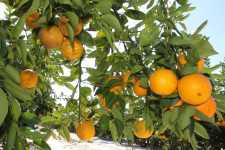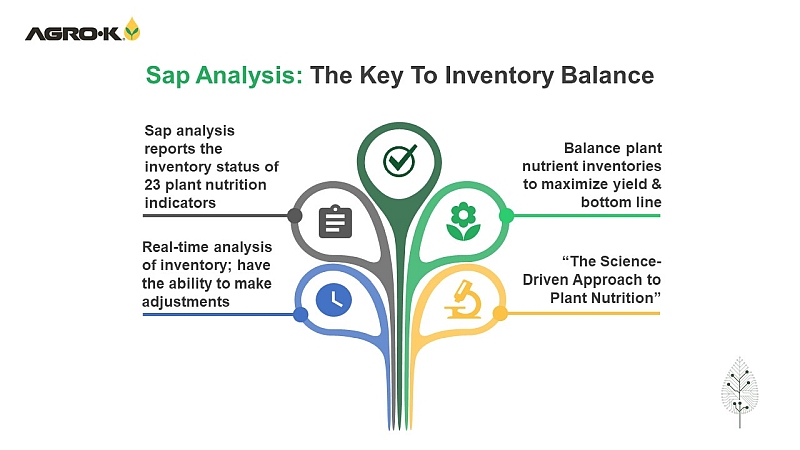Citrus Research Ramps Up In Florida

Florida Grower recently sent out a call to citrus researchers around the state for an update on their studies. Here’s what a few have under way:
Ed Stover
USDA-ARS Horticultural Research Lab, Ft. Pierce
The USDA Agricultural Research Service has conducted breeding programs to create new citrus varieties since 1893, and has released a number of important cultivars. These efforts continue and are actively directed at providing citrus varieties to overcome existing shortcomings and provide new opportunities. The USDA breeding team includes four scientists. This team, which focuses on scion breeding and genetics in partnership with many colleagues, support scientist Randy Driggers, and a number of grant-funded technicians and students. Conventional breeding for improved fruit qualities in all major market categories remains a core activity. Understanding, screening and selection for resistance and tolerance to HLB are especially active research areas. Numerous potential transgenic solutions are being explored, including transgenics derived solely from citrus genes. Improved varieties with HLB resistance/tolerance and commercial fruit quality are being developed through combining the best non-transgenic resistance sources using traditional breeding.
Phil Stansly
UF/IFAS Southwest Florida Research and Education Center, Immokalee
We are in the fifth year of a study evaluating individual and combined effects of vector control and foliar nutrition on a 13 acre block of Valencia trees planted in 2002. Trees were 30% infected with HLB when the experiment started in 2008 and more than 90% infected just two years later. Insecticides were applied four to five times per year including twice during the dormant season and otherwise whenever psyllid numbers exceeded two per 10 taps. The foliar nutrition followed the well-known program of Maury Boyd. In spite of a January 2012 freeze, trees receiving both insecticides and foliar nutrition yielded 2.2 boxes per tree in February 2012 compared to 2.0 for nutrition alone, 1.9 for insecticide alone, and 1.6 for untreated trees. All differences were statistically different except nutrition alone compared to insecticide alone. This experiment demonstrates what many Florida growers already know: that HLB trees can remain productive with vector control and good horticultural practices including foliar nutrition.
Bill Widmer
USDA-ARS Horticultural Research Lab, Ft. Pierce
The citrus juice processing industry generates a waste stream of 3.5 to 5 million tons annually, which is dried into pellets for use as a cattle feed. While the value of citrus pulp pellets (CPP) is marginal (3 to 8 per pound), it solves a waste disposal problem. Citrus waste contains sugars that are fermentable to ethanol, large quantities of pectin, other polysaccharides, and various phytochemicals beneficial to human health. While these have a much higher value than CPP, their recovery is very limited because separate processes are used and recovery costs are high. Our research focuses on the development of new sequential processes for more economical and environmentally friendly recovery of co-products and finding new uses to increase demand for co-products derived from citrus processing waste streams. This will increase the citrus crop value for the grower.
Jan Narciso
USDA-ARS Horticultural Research Lab, Ft. Pierce
Our microbiology research addresses current concerns of the citrus industry. WashGard + copper sprays were established for field control of citrus canker resulting in a significant reduction in lesions on fruit. Good agricultural practices concerns using canal water for mixing with copper for sprays were addressed and our data showed E. coli does not survive in the spray. Currently, our main interest is in further controlling citrus canker. Studies are being conducted on the chemical and microbiological ecology of canker lesions. Data from these studies will provide information on the survival mechanism of the bacterium and aid in methods of control. We also are screening natural products for antimicrobial use against citrus postharvest pathogens. Our goal is to include these active compounds somewhere on the existing line as a spray or in a coating.
Jude Grosser
UF/IFAS Citrus Research and Education Center, Lake Alfred
In our current research program and citrus variety improvements, we are looking for four components. First, we are seeking to develop new and improved sweet oranges for use in not-from-concentrate juice with a focus on enhanced juice quality and sustainable production. Second, we are breeding seedless fresh fruit varieties that meet consumer preferences for convenience, longer seasonal availability, new marketing opportunities, and disease resistance. Third, we are searching for disease-resistant and tree-size controlling rootstocks that will facilitate sustainable and profitable production. Finally, we are researching the development of consumer-friendly transgenic solutions to HLB and canker.










